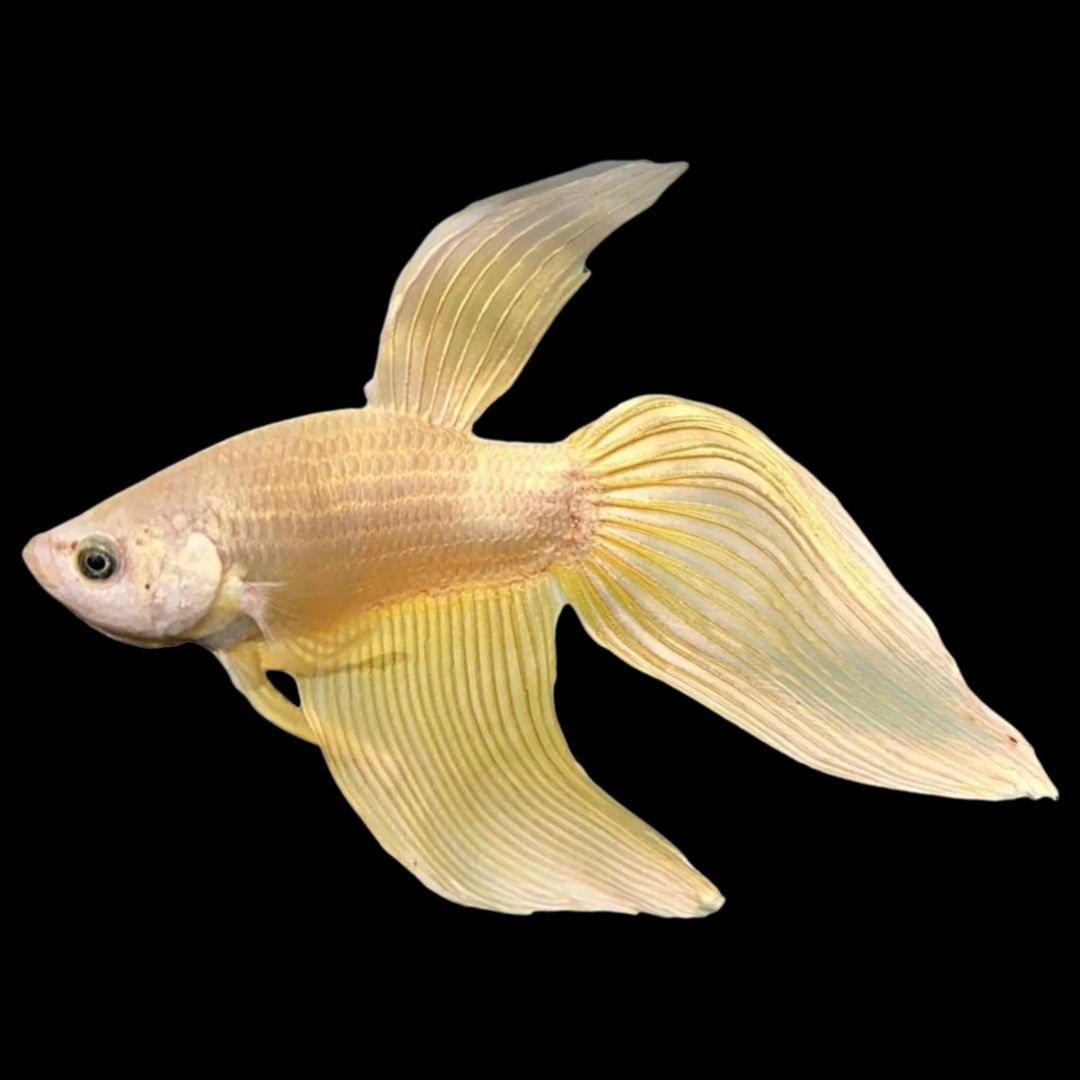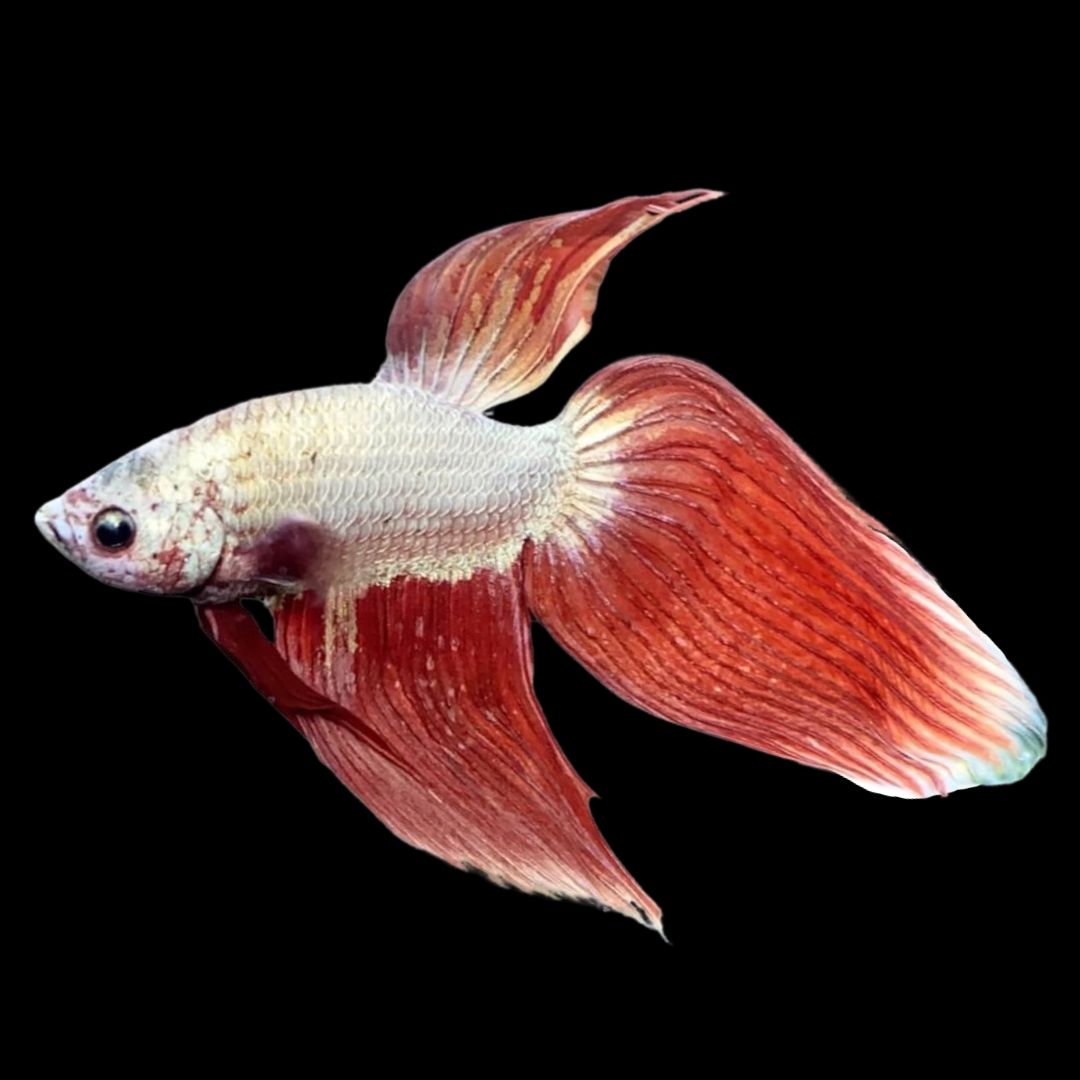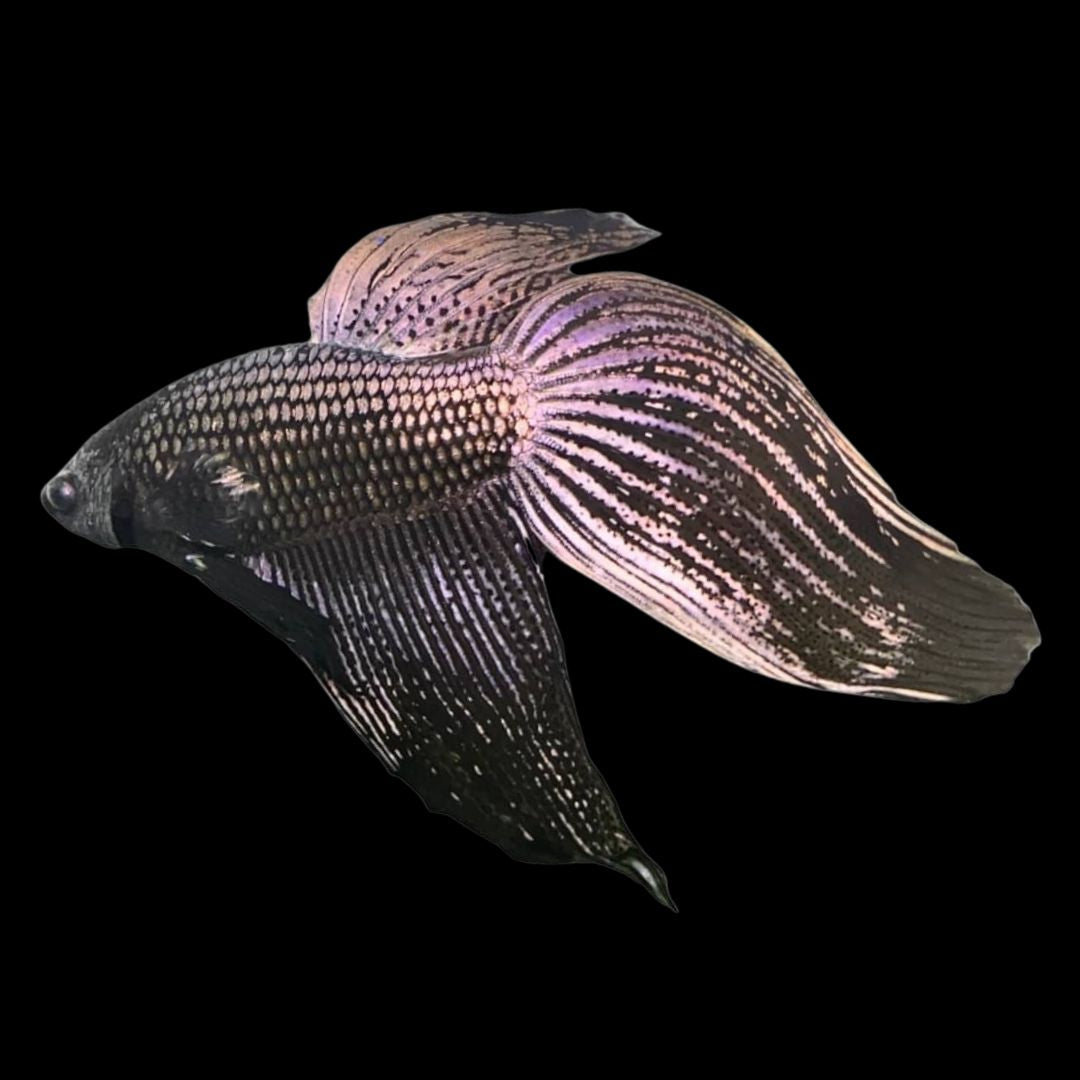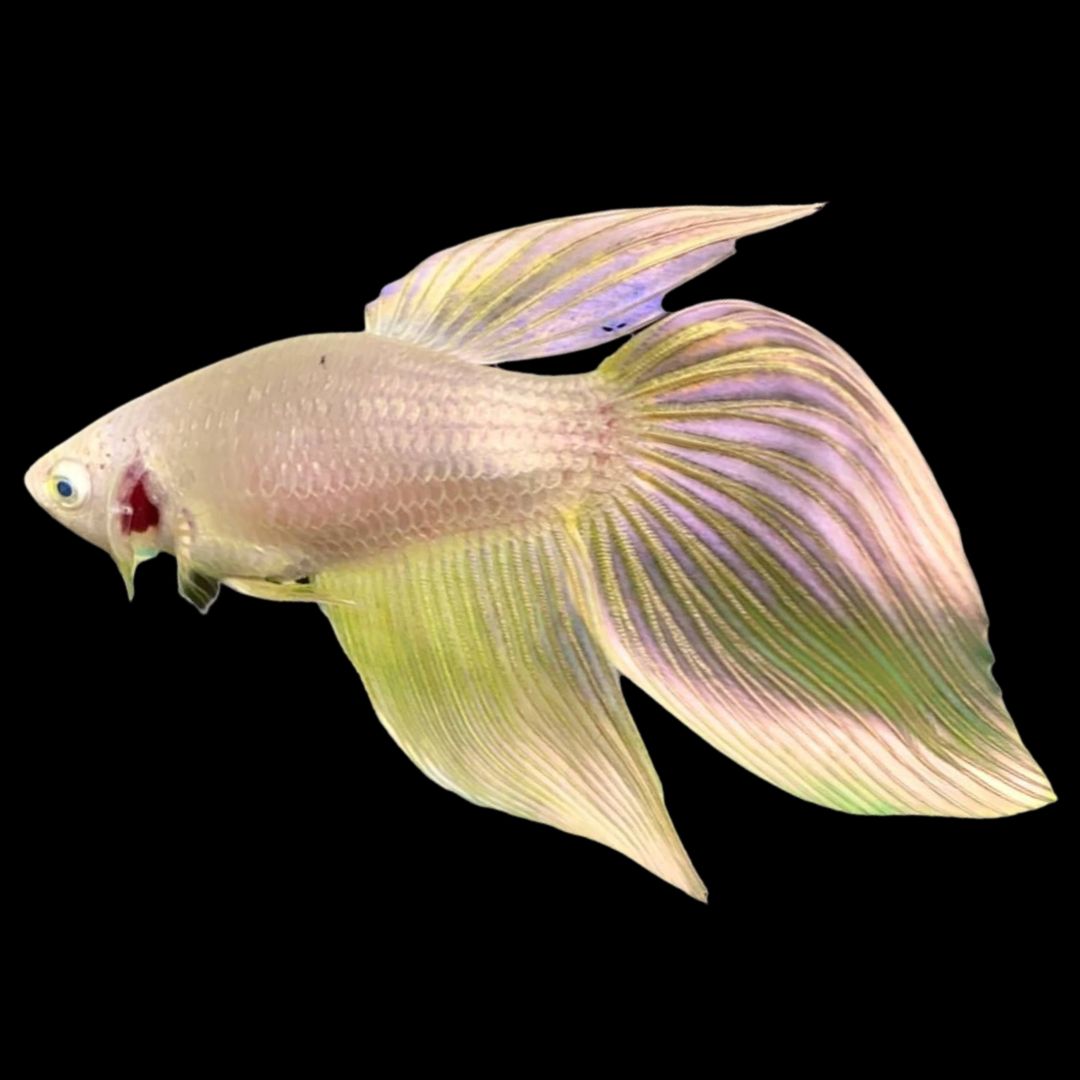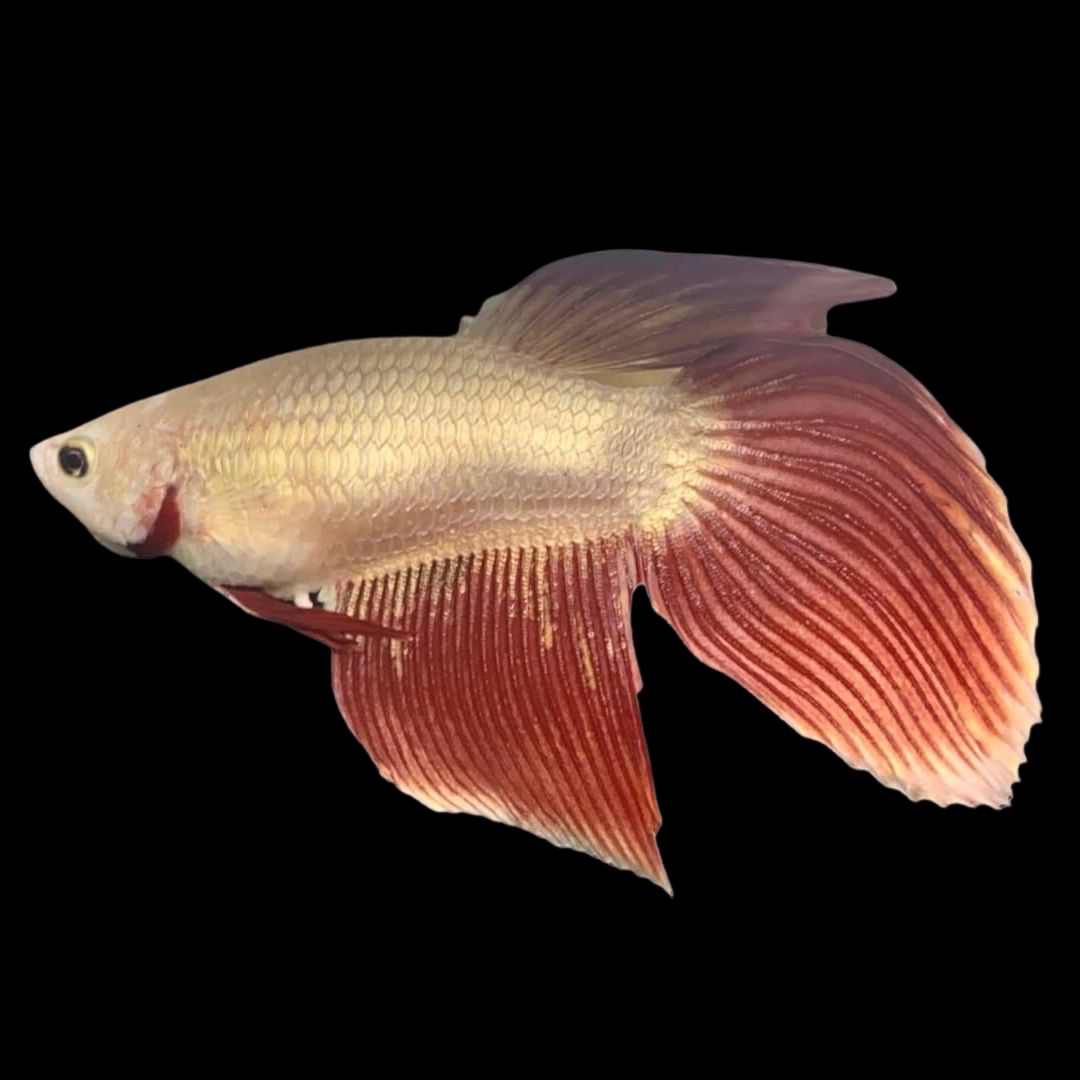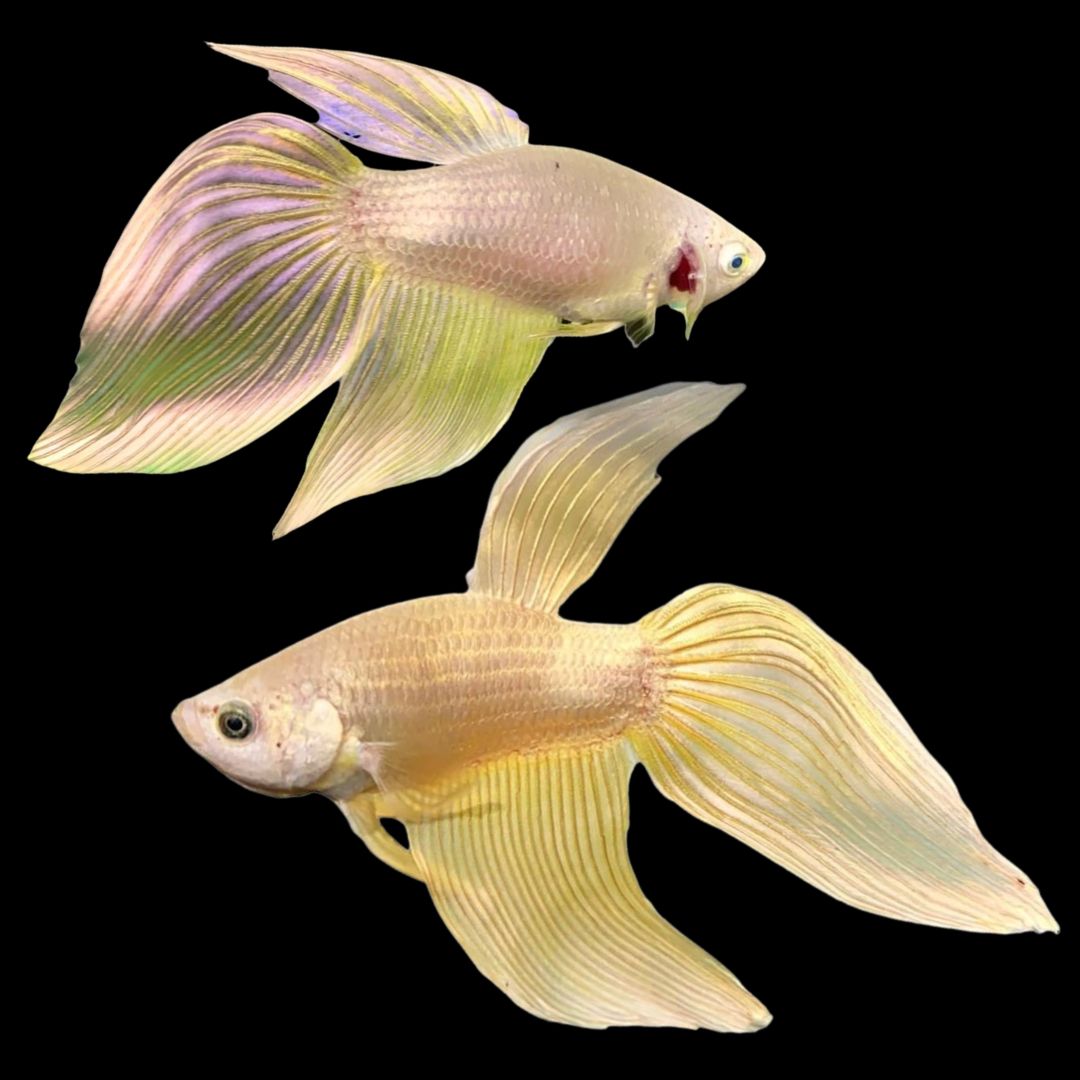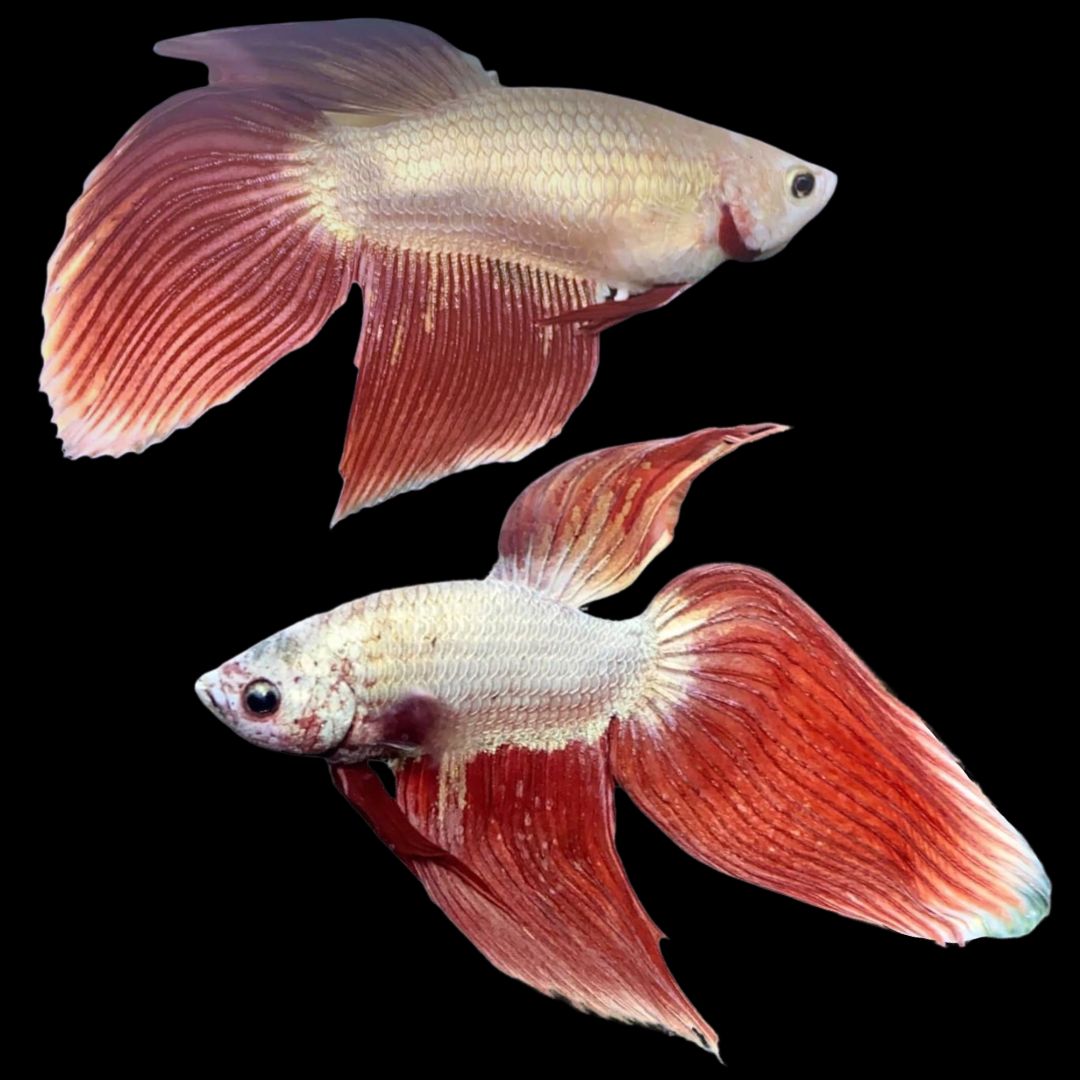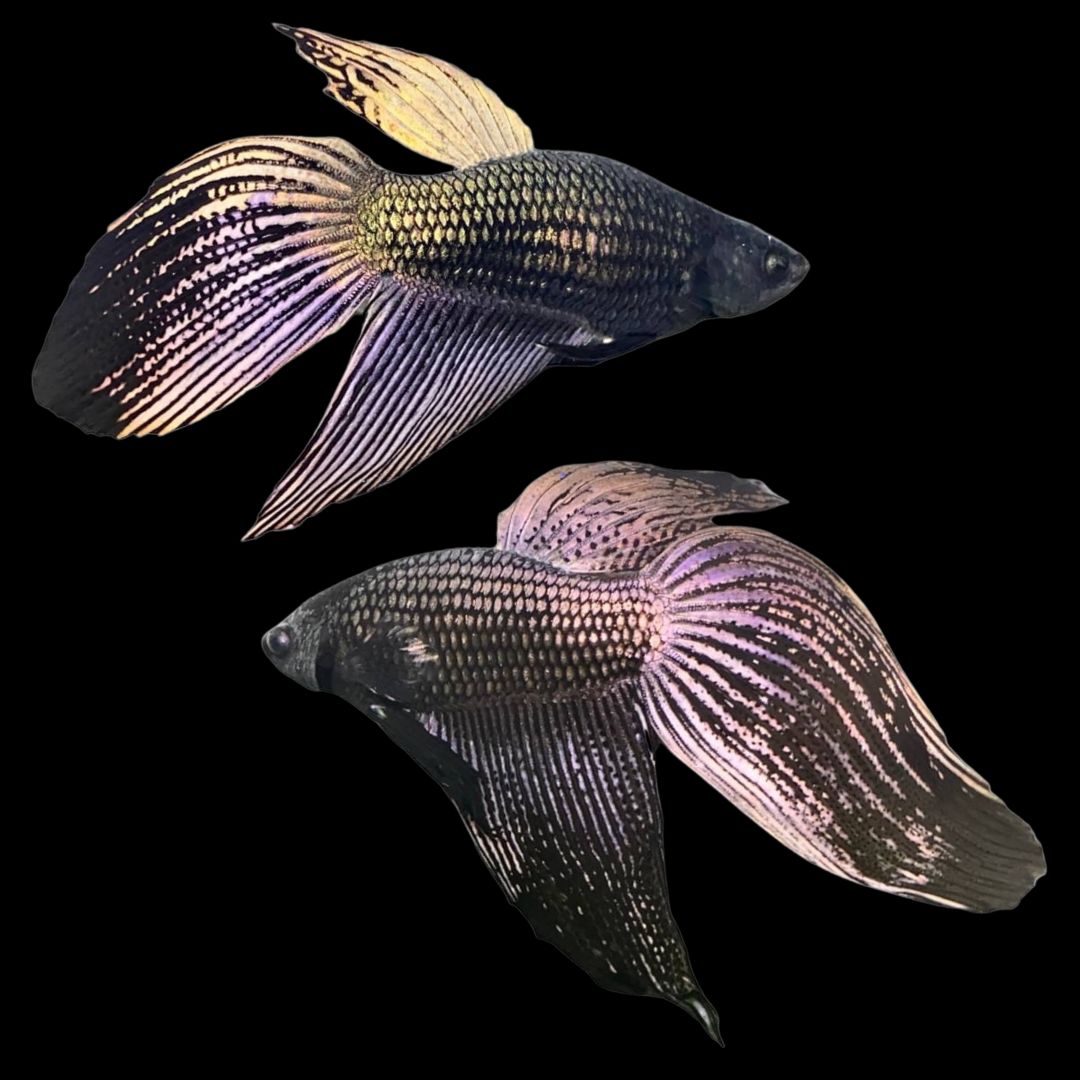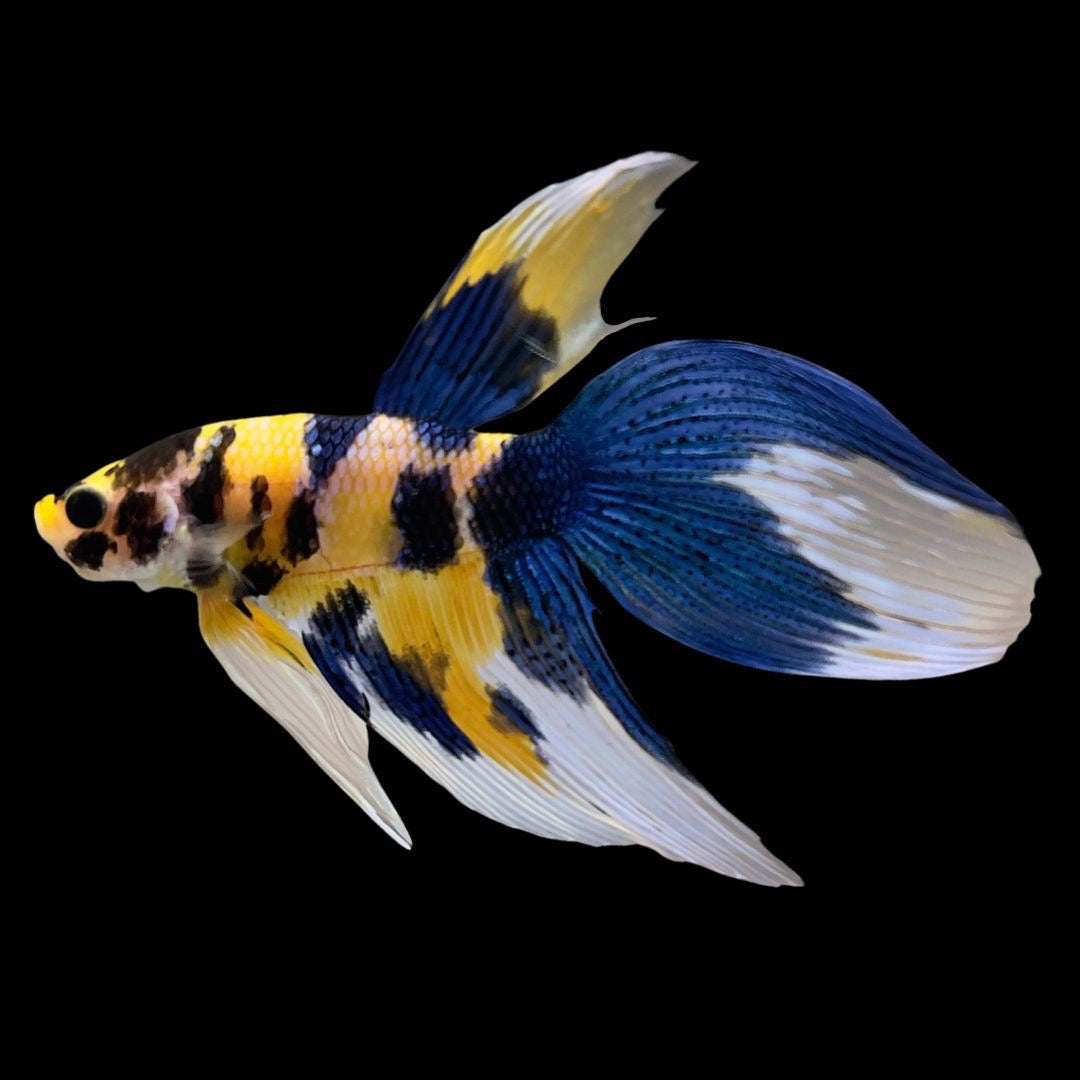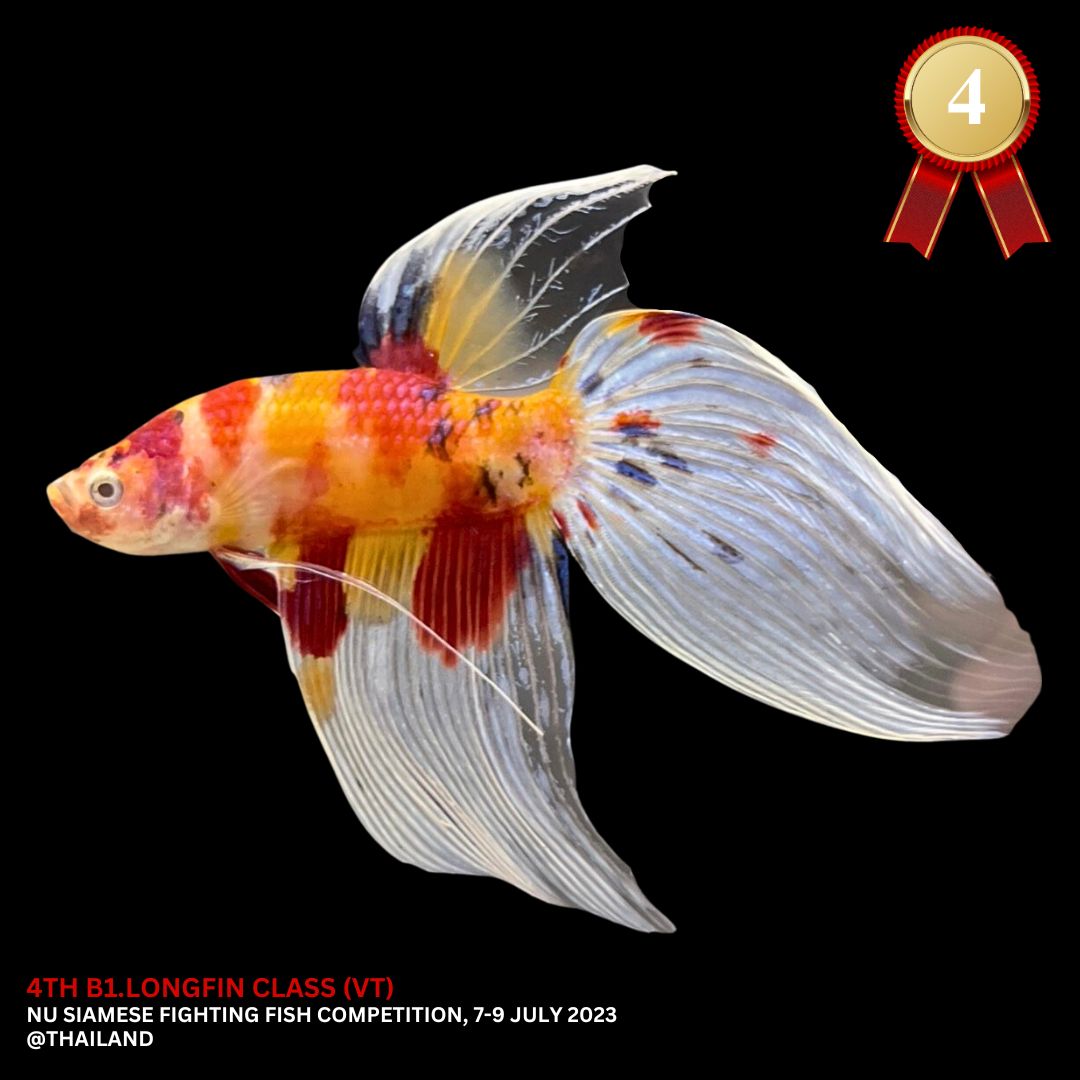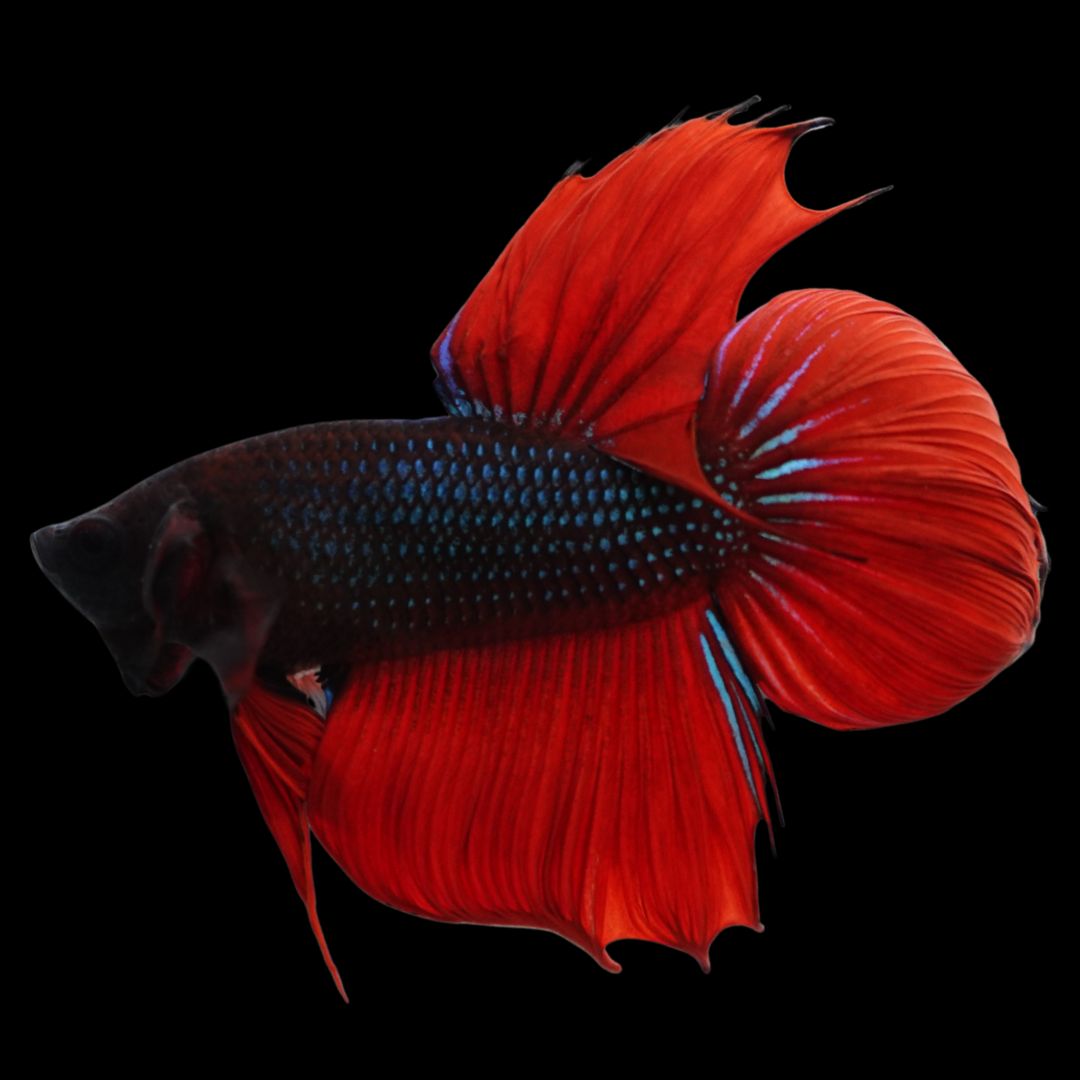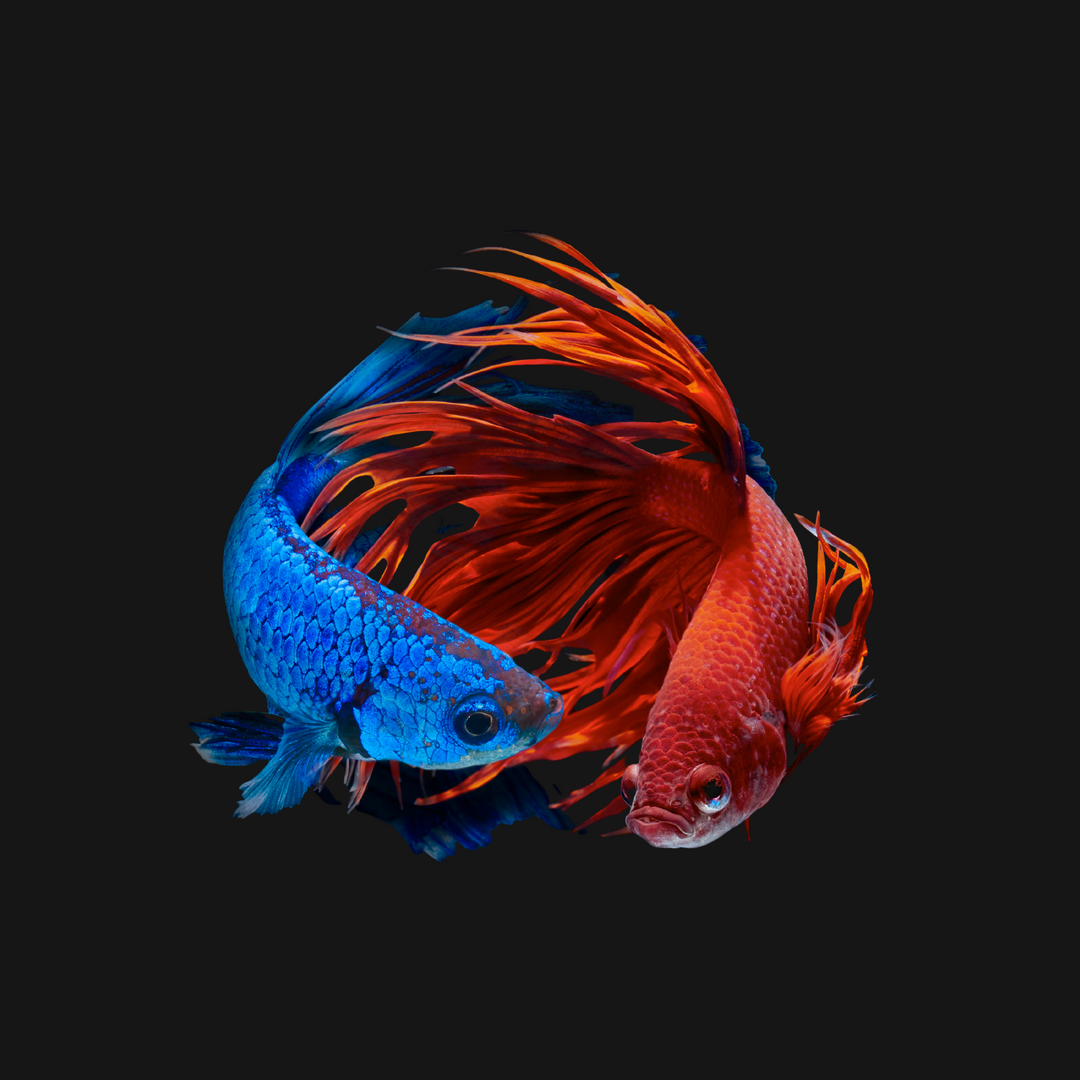
Veiltail
FAQs
About Veiltail Betta Fish
There are several distinct types of Veiltail Bettas, characterized by their unique tail shapes. Some of the most notable types include:
- Classic Veiltail Bettas: This is the most recognizable type, featuring long, flowing tails that drape down like a veil. They are known for their elegant and graceful appearance.
- Marble Veiltail Bettas: These Veiltails display a mix of colors in a marble-like pattern. Their coloration can change over time, making each fish unique.
- Dragon Scale Veiltail Bettas: Characterized by their thick, metallic scales, these Veiltails have a distinctive, armor-like appearance. The dragon scale pattern usually covers most of the body but not the tail.
- Dumbo Ear Veiltail Bettas: Known for their large, pectoral fins resembling elephant ears, these Veiltails are not only appreciated for their tail but also for their unique finnage.
- Koi Veiltail Bettas: They resemble Koi fish with their color pattern and are prized for their multiple colors and patterns, which can include spots and blotches.
Each type of Veiltail Betta offers its own unique beauty and appeal, making them popular among aquarium enthusiasts. The variation in patterns and colors is a result of selective breeding and genetic diversity within the species.
Veiltail Bettas are celebrated for their remarkable array of colors, making them a dazzling choice for aquarium enthusiasts. Their coloration falls into two main groups: multicolor and solid colors. Each category presents a spectrum of hues and patterns, showcasing the varied elegance of these fish. Below is an overview of the different color options available in Veiltail Bettas:
Multicolor Veiltail Bettas
These Veiltail Bettas display a mix of colors, often in unique and complex patterns:
- Marble Veiltail Betta: Swirling patterns of different colors, changing with age.
- Butterfly Veiltail Betta: Two-tone pattern with contrasting fin and body colors.
- Koi Veiltail Betta: Spots and patches of various colors, resembling Koi fish.
- Grizzle Veiltail Betta: Speckled pattern of translucent and iridescent scales.
- Dragon Scale Veiltail Betta: Metallic scales with a mix of colors.
Solid Color Veiltail Bettas
Solid Color Veiltail Bettas are characterized by a consistent color throughout:
- Red Veiltail Betta: A classic, vibrant shade, symbolizing the traditional Betta color.
- Blue Veiltail Betta: Ranging from deep royal blue to lighter shades.
- Green Veiltail Betta: A less common, iridescent color that shines under light.
- White or Albino Veiltail Betta: Pure white, with albinos featuring red eyes.
- Black (Melano) Veiltail Betta: Deep, dark coloration.
- Yellow or Gold Veiltail Betta: A sunny, bright hue, rare but sought after.
- Pink Veiltail Betta: A soft, delicate hue that's quite rare and sought after.
- Purple Veiltail Betta: A regal and less commonly seen color, ranging from light lavender to deep violet.
- Orange Veiltail Betta: A vibrant and striking color that adds a bright pop to any aquarium.
This array of colors and patterns is the result of extensive selective breeding, making each Veiltail Betta uniquely captivating and a reflection of the species' natural splendor.
Veiltail Bettas, often mistaken as a separate Chinese species, are actually Thai fighting fish that originated from selective breeding of Wild Bettas. They were initially bred for their biting abilities and appealing characteristics, resulting in Bettas with longer fins and tails. While commonly referred to as Chinese Bettas, their distinct long, ruffled fins and vibrant colors are more akin to a Chinese opera performer's costume.
Male and female Veiltail Bettas differ in size, fin length, and color vibrancy. Males typically have larger bodies, longer fins, and brighter colors, while females have thicker bodies, shorter fins, and less vibrant colors.
When looking for "Veiltail betta for sale," there are several avenues you can explore. Generally, Veiltail Bettas are available at local pet stores, aquarium specialty shops, and online marketplaces. These locations often offer a range of Veiltail Bettas, varying in color, size, and price, allowing you to choose one that best fits your preferences and aquarium setup.
Additionally, online platforms and fish forums can be great resources to find breeders and sellers specializing in Veiltail Bettas. These online communities often provide detailed information about the fish, along with advice on care and maintenance.
A particularly notable place to find Veiltail Bettas for sale is our website, Thailand Betta Fish. We are renowned for our extensive selection of high-quality Veiltail Bettas. We offer a variety of colors and patterns, ensuring that enthusiasts and collectors can find a fish that meets their specific requirements. Furthermore, purchasing from a specialized site like us, Thailand Betta Fish, often means that the Bettas are bred and cared for by experts, ensuring their health and quality.
When buying a healthy Betta splendens Veiltail, there are several key factors to consider to ensure you are selecting a robust and healthy fish. Here's what to look out for:
- Active Behavior: Healthy Veiltail Bettas are generally active and responsive. They should swim freely and not lie at the bottom of their tank or float at the surface excessively.
- Vibrant Colors: Look for bright, vivid colors. Dull or faded colors can be a sign of stress or illness. Even naturally darker Bettas should have a certain luster to their scales.
- Clear Eyes: The eyes should be clear and bulge slightly. Cloudy, sunken, or overly protruding eyes can indicate health issues.
- Intact Fins and Tail: Check for any tears, fraying, or holes in the fins and tail. While minor damage can heal, severe damage could suggest poor water conditions or aggressive tank mates in their current environment.
- Good Appetite: A healthy Betta should show interest in food. If possible, observe the Betta eating before you make your purchase.
- No Signs of Disease: Look for signs of common Betta diseases
- Healthy Gills: The gills should open and close smoothly without any sign of struggle. Labored breathing or swollen gills are red flags.
- No Signs of Stress: Signs of stress include clamped fins (fins held close to the body) and frequent hiding. Stress can weaken their immune system.
- Check for Compatibility: If you plan to add the Veiltail Betta to a community tank, ensure it is compatible with your existing fish to prevent stress and aggression.
- Quarantine the New Arrival: To prevent the spread of potential diseases, it's a good practice to quarantine new Bettas in a separate tank for a few weeks before introducing them to your main aquarium.
By paying attention to these aspects, you can significantly increase your chances of bringing home a healthy and vibrant Betta splendens Veiltail. Remember, a healthy Betta is not only more likely to live longer but will also be more interactive and enjoyable as a pet.
Our Legacy
We work tirelessly for 30 years to uphold the high standards set by our Thai ancestors and fellow breeders, ensuring that each and every Betta Fish for sale we produce is of the highest premium quality and meets the expectations of our customers. When you buy live betta fish online from us, you're not just purchasing a beautiful and captivating pet. You're also becoming a part of a long and rich history, and joining a community of people who appreciate and value the beauty and wonder of these amazing Betta Fish.
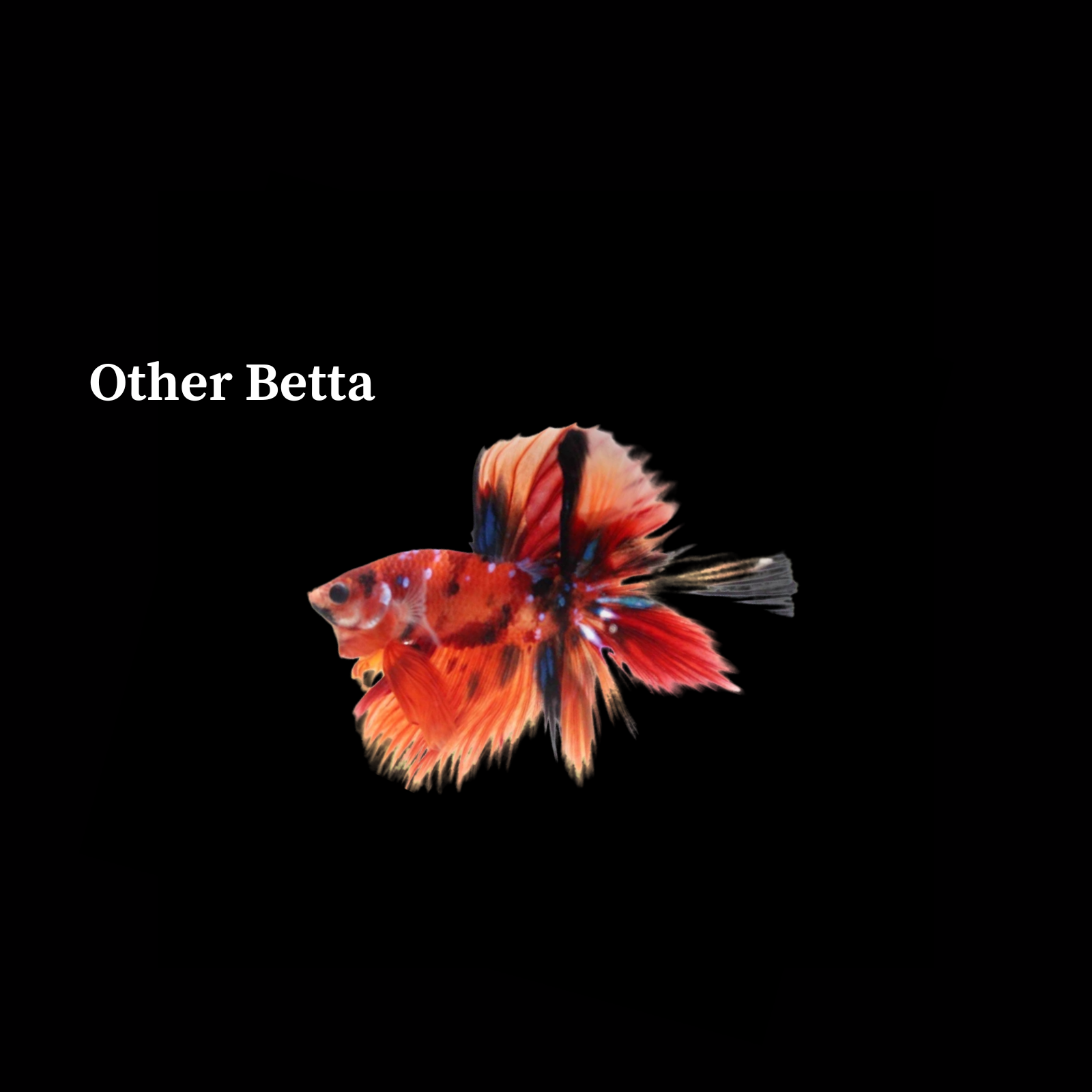
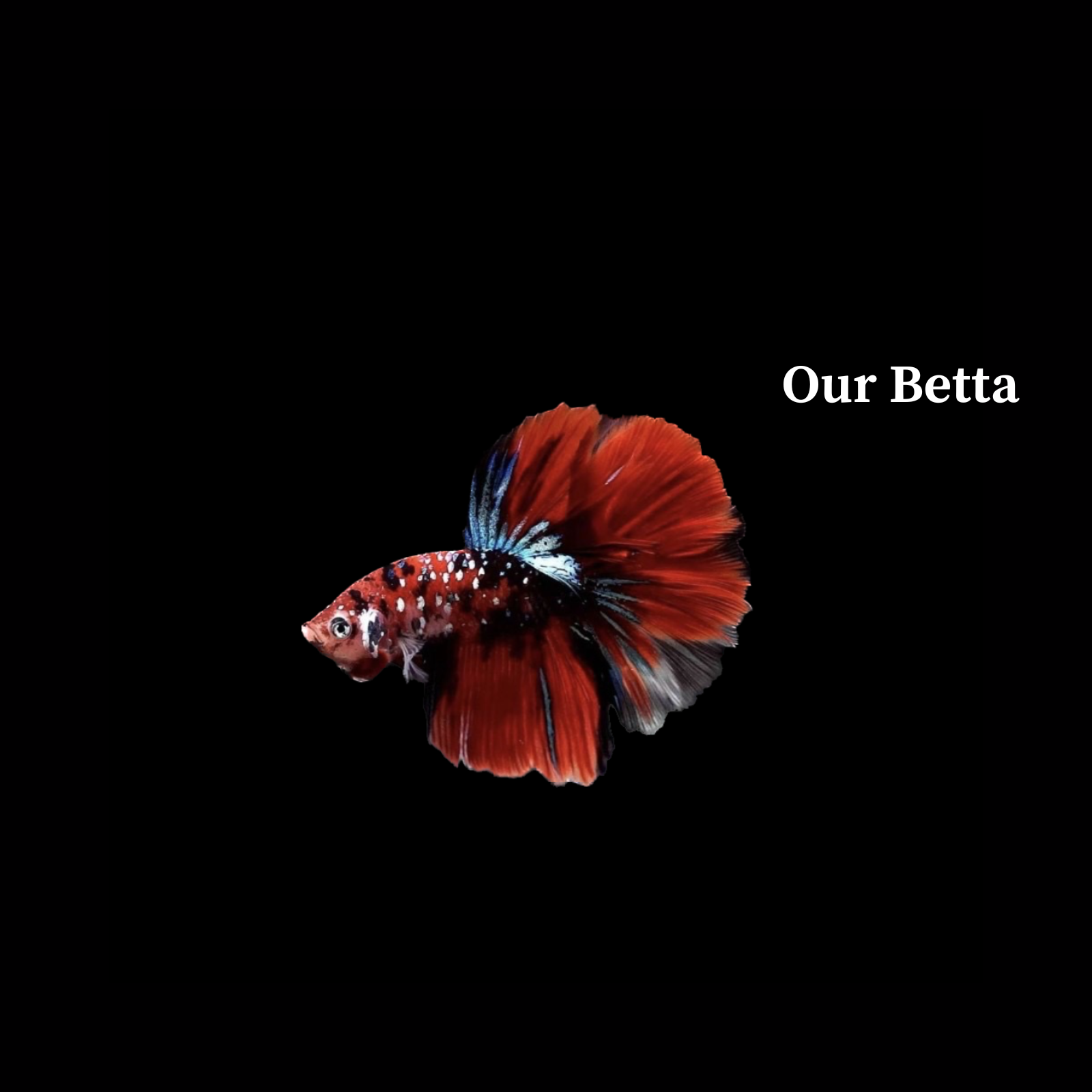
Veiltail Betta Fish Care Guide
To ensure the well-being of a Betta splendens Veiltail, a minimum tank size of 5 gallons is recommended. This size provides ample space for swimming and helps maintain stable water parameters. Considering how big do Veiltail Bettas get, which is typically around 2-3 inches, a larger tank can further enhance their quality of life and reduce stress.
The Veiltail Betta lifespan is typically around 3-5 years, though they can live longer with optimal care. Factors influencing their lifespan include diet, water quality, and stress levels.
Veiltail Bettas can be aggressive, especially males. It's advised to keep only one male per tank to prevent territorial disputes. Ideal tankmates for Veiltail Bettas are peaceful, small fish, and some invertebrates. Avoid fin-nippers or overly active fish that can stress the Betta.
If you suspect your Veiltail Betta has fin rot, a vet visit is advisable, especially if home remedies or over-the-counter treatments haven't been effective. Early professional intervention can prevent the spread and worsening of the disease.
Male Veiltail Bettas, known for their long flowing fins, require clean, warm water (around 78-80°F) and a balanced diet. Regular tank maintenance and monitoring for signs of stress or disease are crucial. They also benefit from environmental enrichment like plants and hideaways.
eiltail male Bettas are known for their aggressive behavior, especially during mating displays. They create bubble nests for spawning and are capable of adjusting their body coloration based on their environment and mood. They breathe air using a specialized organ called the labyrinth.
Veiltail Bettas thrive on a varied diet consisting of high-quality betta pellets, frozen or live foods like brine shrimp and bloodworms, and daphnia. It's important to balance their diet to ensure proper nutrition and avoid overfeeding.
To breed Koi Veiltail Bettas, start by conditioning the pair with high-quality food and a separate breeding tank. Once the male builds a bubble nest and the female shows readiness (vertical stripes, swollen belly), introduce them. Post-spawning, remove the female and provide care to the fry once they hatch.
A lid is recommended for Veiltail Betta tanks, as Bettas are known to jump. This is especially true for females, who may leap out during stress or if startled. A lid also helps maintain stable tank conditions by reducing evaporation.
Veiltail Bettas, particularly males, are known for their territorial and aggressive nature. This aggression is most pronounced towards other male Bettas but can extend to other fish species, particularly those with bright colors or long fins. To reduce aggression, provide ample space, visual barriers like plants or decorations, and avoid housing them with other male Bettas or fin-nipping species. Maintaining a stress-free environment with proper water conditions and a balanced diet also helps in mitigating aggressive behaviors.
Keeping male and female Veiltail Bettas together permanently is generally not recommended due to the risk of aggression, particularly from the male. However, they can be briefly housed together for breeding purposes under close supervision. The breeding tank should be spacious, with hiding spots for the female to retreat. After spawning, the female should be removed to prevent aggression from the male. For general cohabitation, separate tanks are advisable to ensure the safety and well-being of both fish.
Disposing of a dead Betta splendens Veiltail should be done respectfully and in a manner that is environmentally safe. Do not flush the fish down the toilet, as this can spread diseases to wild fish populations. Instead, you can bury the fish in your garden, which also serves as a natural way to return it to the ecosystem. Alternatively, wrap the fish in paper and dispose of it in the trash. Some areas may have specific regulations for pet disposal, so it's advisable to check local guidelines.


